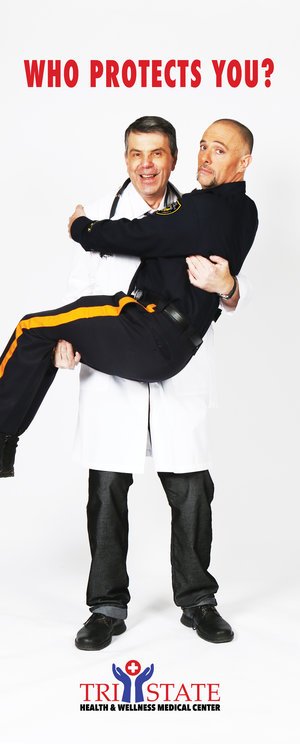Chicago: An Up-Close Assessment
By Daniel Del Valle with George Beck, Ph.D
Guns. Lots of guns on the street of Chicago’s south and west sides. There are so many guns, the idea of a gun-free zone seems like a utopian dream in a city that by the halfway point of this year had already seen over 1,400 shootings and over 250 people killed. Of these victims, many are children, either caught in the crossfire or struck down during fierce gangland battles that are as routine as the sun rising and setting on the Windy City. These communities are shaken to their core. People are being shot by the thousands, and bodies are piling up by the hundreds, and yet, not much is done to stem the tide. It seems very suspicious that these tragedies can play out over and over on the streets of an American city. Are we learning the truth from our mainstream media and politicians? Are we as Americans doing enough to solve this problem?
I set out for Chicago with these questions in mind. I wanted to walk the streets of the south and west sides and see for myself what was really going on. I wanted to speak directly with the residents. I had many questions that needed answering even as friends and family urged me to evaluate the problem from a distance because it was just too dangerous to go there. Perhaps that’s part of the problem. Maybe many believe saving Chicago is a wasted effort, that it is too far gone, that many have tried and many have failed, and it’s hopeless. I was raised to believe a conversation could change the world. The only way for that to happen is to be there in the flesh, so against all advice I boarded a plane and flew to Chicago. I’d be lying if I didn’t disclose that I quickly learned how dangerous the community was, where even I who grew up in the city of Patterson, NJ, was at times concerned for my safety in areas where the residents justly refer to the neighborhood as “Chiraq”—a nickname made from combining Chicago and Iraq to emphasize a war zone.
Once at Chicago, I began asking questions of the very first person I met—the cabbie I hailed outside the airport—who told me of the train burglaries and robberies of cargo trains carrying mass shipments of firearms and how these guns were ending up on the streets. As I continued my quest for answers, this reoccurring reason kept coming up—numerous residents were pointing to the train cargo thefts of high quantities of firearms, some even raising a conspiracy theory that these trains were purposely passing through the areas where they had a high probability of being stolen. Whether that is true or not is a stretch, but a simple Google search reveals multiple cargo thefts of firearms passing through the city on trains. So, yes, there are a lot of stolen firearms on the streets of Chicago. But guns don’t fire on their own—they don’t just jump off a table and start killing people. Therefore, the saturation of guns argument is knotty in a country that by comparison has 393 million legal civilian-owned firearms. Yes, you read that correctly. America has enough guns to arm every man, woman, and child and still have more than 67 million left over. Therefore, an abundance of firearms is a concern when in the wrong hands, but perhaps not the singular cause. A quick drive-through of the neighborhoods reveals a more in-depth look into the problem.
Drugs are widespread. Drug addiction is so evident that even during the day tons of people walk the south and west side streets like zombies, high, drunk or both, and noticeably absent are children playing on the streets. You get a quick sense the community is unsafe, and the upkeep of the neighborhoods is close to a post-apocalyptic wasteland where survival of the fittest rules and only the ruthless survive. The area is a testament to the Broken Windows Theory—the criminological theory that offers when a community is run down with visible signs of crime, civil disorder and anti-social behavior, crime flourishes in the vacuum created in an urban area when it appears that nobody cares.
Poverty is also rampant. They are many folks who look malnourished and homeless. Seeing the faces and speaking with the residents, you get a quick sense that everyone is on edge, looking over his or her shoulder for the next shooting, or cautious of being victimized themselves. Of all the residents I spoke with, every one, yes every single one, had their own story of victimization—whether Frank Hopkins, who told me how his mother was recently murdered in her home during a robbery and that he was recently robbed at gunpoint on the street, or Pastor Apostle Larry Tabron Jr. whom I spoke with at the funeral home who told me the story about how just last week a person was killed outside the funeral home. The commonality in all the stories I heard affirmed they had all been intimately acquainted with violence and were fed up.
Mental illness is also a significant problem. Many people walk the streets talking to themselves or upon approach are so distant in rational thought that after a few words, you quickly realize you need to move on for your safety. Their responses are much more severe than being suspicious of a new face in the community. I trusted my common sense to tell me when an interaction was too dangerous, and to continue on before I became a victim.
Gangs are widespread and control the streets. There is tons of gang graffiti on buildings and street signs that indicate who operates in the area. There are many factions of gangs that fight with each other daily, and from these battles, the community is caught in a web of violence that seemingly is impossible to untangle. Gangs need to be addressed. The leaders of these gangs need to be brought to justice, and the control of the community needs to be transferred back to the residents. I know this is a hard sell and that many would say it’s impossible, but an attack on gangs would seriously help the youth who are attracted to their power and status.
This is not an all-inclusive list of issues that if addressed would stop the violence in Chicago, however, any preemptive strategy that focuses solely on guns and doesn’t address drug addiction, poverty, mental illness and gangs is destined to fail.
As I walked the streets, stopping residents and speaking with them, I had heard many stories from those who were grieving the loss of a loved one, or who were bitter over the conditions and the weak responses by elected officials and law enforcement. In fairness, I saw the police out there doing their part. I lost count of the police-civilian interactions where the cops were patting people down for weapons or drugs, or whatever illegal items one may be carrying. They are out there doing their jobs, but more is needed. Many residents feel abandoned, forgotten and expendable. How can this continue to happen? It’s no secret that Chicago’s south and west sides are in desperate need of help.
What many don’t realize is that the community is salvageable—it’s not just an isolated place where bad people with evil intentions gather and all hope is lost. Instead, it’s a community of strength—residents who are pushing ahead through the violence and are seeking relief in any way and by anyone who is willing to give it—whether that be the federal government, or President Donald Trump himself, many of the residents I had spoken with were removed from the sensationalism surrounded by the idea of the president helping quell the violence—they just want safety—they want to live in peace.
“I believe the president has the ability,” said Pastor Tabron. “If he can go and speak with the leader of North Korea, if he can deal with areas in Syria, I believe that he has the power to help a small city like Chicago.”
These are narratives seldom heard in the mainstream media. They are indeed not being told by the politicians currently in charge of the city.
“I would tell the Trump administration to first make a trip to Chicago,” said Pastor Tabron. “They need to come and see for themselves. It’s one thing to hear it from someone else, and it’s another thing to see it for yourself.”
However, solving the violence in Chicago is far more complicated than simply asking for help. It involves politicians swallowing their pride and recognizing, like Pastor Tabron believes, that any intervention is worth an attempt. The current strategy of begging criminals to stop shooting people will not work. Politicians need to become awake to the struggles the residents are continually enduring, like Tanika Kirkpatrick who merely wants the violence to end so she can enjoy the end of the summer.
“Kids are going back to school,” said Kirkpatrick. “We just want to have one last gathering where we can enjoy each other, and yet we have multiple shootings.” Interestingly, Kirkpatrick had also brought up a significant problem causing the violence as she saw it in her 36 years of life in Chicago.
“When I was growing up, when I was a child, all the grownups in the area, we all came together to raise the kids. So I had my mother, my grandmother, my neighbor, my auntie, I had my friend’s grandmother, they were all telling me, helping me and leading me and pulling me the right way. But right now it’s really, really bad. Our children don’t even come outside. Do you hear any kids? Do you see any kids? We don’t even let our kids outside.”
In my assessment, I learned that like the saying goes “an ounce of prevention is worth a pound of cure.” Therefore, we must address the root causes that facilitate the likelihood of children becoming involved with violent gangs and thus partaking in the endless shootings and murders. That can only be resolved by having an honest conversation about the culture in the community, and by generating new narratives that shun men who do not father their children, and by championing men who are responsible fathers. If this became the dominant narrative, we could surely take a significant step forward. However, many people are not willing to be honest. Rather, they prefer to blame others or point to single issues that will not solve the overall problem. They are caught up in political quagmires that choose political party pride over the struggles of the residents. Politicians need to focus on improving the lives of the residents without any concern for political narratives, like if President Trump’s leadership would stop the violence that he would get the credit, and politically this may become a problem for Democrats in the city and beyond. If politicians stopped thinking along these lines, then begging criminals will not seem like an appropriate response. Begging criminals to stop killing people is a pathetic response, and the residents of Chicago deserve better.
In closing, as you see on our cover, the image is of a dark tunnel that at the end is bathed in light. Chicago is currently stuck in that dark tunnel, but with the right proactive measures and strong, honest leadership, it indeed can become a bright community where residents thrive and live in peace—where the bodies are not piling up, and the heartache is unbearable. As difficult as it is to imagine, it is possible. I hope that Chicago is not forgotten; that more people will go to the area and further assess the issues and commit to making changes that will improve the dire conditions. A conversation can change the world. We should have many more. All hope is not lost.







